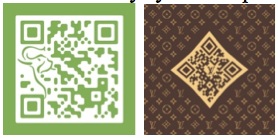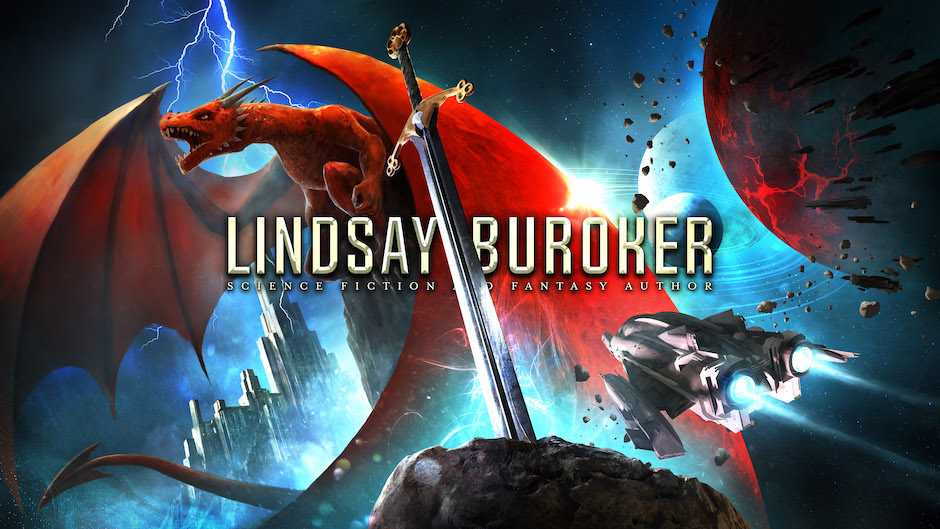Camille Picott, one of my critique buddies from the SFF Online Writing Workshop, has officially joined the e-publishing world, though she’s been an independent author and publisher for some time. She’s here to guest post on some interesting new technology: QR Codes (if that doesn’t ring a bell, just read on — you’ve probably seen them and didn’t realize what they were for) and how you might want to use them.
How Writers & Publishers Can Supplement the Reading Experience
By night I’m a writer and self-publisher, by day I’m a full-time working mom in the wine industry. My daytime and nighttime lives rarely intersect, but in recent weeks I’ve been learning about these nifty things called QR Codes. Here’s an example of what they look like:

A QR Code is a two-dimensional bade code that can be read by a Smart Phone. (If you’ve already got a Smart Phone with a QR Reader, go ahead and scan this code – it should take you to my website, www.pixiupress.com.) They have the potential to open new doors for indie writers and publishers.
This past week I had the privilege of taking a webinar on QR Codes. The webinar was presented by Rick Breslin, Founder and CEO of Hello Vino. And though the webinar focused on QR Codes in the wine industry, I learned quite a bit that can be applied to the publishing company.
Here’s some of what I learned from the Hello Vino webinar. And although this webinar was aimed at the wine industry, most of what I learned can be applied to the publishing industry.
You can use a QR Code to:
1. Link directly to a URL – sends your customer to a URL of your choosing. From a URL, there are a various things your customer can do:
a. Discounts/Coupons
b. Access additional information about product
c. Enter sweep steaks
d. Sign up to receive more information
e. Access video
f. Make purchase
g. Interact with social media
2. Send a text message – allows your customer can send you a text message (Interesting tidbit: this allows you to capture the phone number of the person texting you.)
3. Call a phone number – allows customer to call phone number supplied by you
4. Decode a secret message – you can embed a message up to 500 characters long in the QR Code; scanning the code will display the “secret” message. Some companies have been using this method to send customers on scavenger hunts.
5. Download Vcard contact info – allows you to download contact info; the future of business cards
Where you can get a free QR Code:
1.Go QR – this is a neat site that allows you to create QR codes that do all 5 of the items listed above. It’s totally free.
2. Kawya – another free site. It allows you to do all of the above except #5.
3. To find other free QR code generators, do a Google search for Free QR Codes.
What the QR Code Scanners do (not all do exactly the same things):
1. Send you automatically to a website
2. Capture the website so you can go to it later
4. Give customer yes/no options
5. Maintain history of accessed sites
What your customer needs to scan a QR Code:
1. A Smart Phone with a camera
2. An App that reads QR Codes. Here are a few:
Red Laser (iPhone)
ScanLife (Blackberry)
Quick Mark (Android)
3. A QR Code that’s dark in color on a white/light background (contrast is imperative)
4. A crisp QR Code, preferably one that’s generated from an EPS file. JPEGs may work, but be sure to test them.
Why QR Codes are good for businesses:
1. Deliver extra value to your customer
2. Allow you to collect contact info
3. Allow you to capture the location of your customers (usually with their permission)
4. Present incentives to purchase
5. Allow you to interact with your customer
6. Inexpensive and quick to set up
7. Allow you to track consumer awareness and engagement
Best Practices for businesses using QR Codes:
1. Use short URLs. The longer the URL, the more complex the QR Code. The more complex the URL Code, the more difficult it is to scan (generally, you have to make complex codes proportionately larger). If you don’t have a short URL, you can shorten it using bit.ly.
2. Cross Platform Compatibility – make sure the Code can be used on multiple devices.
3. Give instructions to your consumer so they know what to do with the QR Code. For example, if you print the Code on the cover of a book, print a statement like this below/beside it: “Scan this with a Smart Phone app that reads QR Codes.” Until QR Codes are more widely recognized, businesses must help educate consumers. Check out this Macy’s YouTube campaign to educate consumers on QR Codes.
4. Test QR Codes over and over again with multiple apps and phones before releasing to the public.
5. A “micro site” for customers. A regular webpage can be pretty hard to read and navigate on a Smart Phone. Landing sites for QR Codes need to be dimensionally smaller; in other words, designed for a small Smart Phone screen. Check out Hello Vino’s website for an example of a “micro site”. On the right hand side of their home page is a picture of a Smart Phone displaying the Hello Vino app. The website even allows you to navigate the app right on your computer so you can see how it will look on a small screen. Notice how easy everything is to read and how nicely it fits on a small screen.
A quick story relating to QR Code Best Practices: A colleague of mine did some experimenting with QR Codes. Using a long URL, she was unable to successfully scan .5″ QR Code. When she blew the code up to 1″, she was able the scan it. Our IT department shortened the URL, and she was able to scan it at .5″. This illustrates 1) how important it is to have a short QR Code, and 2) how important it is to test QR Codes.
QR Codes are Ugly! What can I do?
Worried that QR Codes are going to look tacky on your book cover? Check out some of the innovative ways you can spruce up at QR Code:

If you’re looking to do something like this, you have to hire a designer. I did a quick Google search and found BeQRiuos, a place that specializes in creating custom QR Codes. I don’t know what this sort of thing costs, but if you’re interested it would probably be worth your time to request a quote from a few of these companies. (Notice that both of these QR Codes adhere to #3 of “What your customer needs to scan a QR Code” – that is, both provide a dark QR Code on a lighter background for contrast.)
My plans for QR Codes:
I have a lot of ideas for how I would like to use QR Codes on my upcoming books. I’m thinking they will function as “Bonus Features.” Here are some things I would like to include:
a. full color illustrations for fantasy creatures in my books
b. YouTube video of me giving a school presentation
c. YouTube video of me talking about my writing process/inspiration for my story
d. early drafts of the book or deleted/altered scenes
e. promote the free teaching curricula I give away on my website
QR Codes and E-books: I don’t see any reason why a writer/publisher can’t include QR Codes in e-books. I’m thinking in my table of contents, I will have a “Bonus Features” hyperlink which will take readers to the QR Code. I will also include a hyperlink to the website, in case the reader does not have a Smart Phone. For those readers who may not have a Smart Phone or an e-reader with access to the web, I may also include the actual website address.
I’d love to hear ideas from other indie writers and publishers regarding QR apps. How would you use them to supplement the reading experience for your customer?
***
About the author of this article: Camille Picott is the author of Raggedy Chan, a middle grade fantasy novel named Best Juvenile Fantasy 2010 by the Bay Area Independent Publishers Association. Check out the Raggedy Chan e-book on Amazon and Barnes and Noble. Hard copies of her book (which includes 40 full-color illustrations) can be purchased at Pixiu Press.




I saw someone who self-published their paperback had put one of these on the back of the book. I think it went to her website. Cool.
I will also include a hyperlink to the website, in case the reader does not have a Smart Phone. For those readers who may not have a Smart Phone or an e-reader with access to the web, I may also include the actual website address.
Speaking as someone who doesn’t own a smartphone: This is absolutely crucial. Well, maybe not the web address – if a reader can’t access the web, you’re in all likelihood magaging your library on your computer, anyway, but the link in general, absolutely. Being locked out of content because I don’t own yet another expensive gadget would be annoying.
This is pretty interesting. I just read an article about putting QR codes on business cards.
Thanks for the info!
I’ve been wondering about those things… Thanks for all the great info!
Hmmm. Interesting. I don’t use smart phones, so was unaware of their use. But it would be a great idea to get one for the blog and / or website. Thanks for this great tip.
Thanks for the comments, folks, and thanks for the thoroughly researched article, Camille!
Pingback: QR Codes – How Indie Writers Can Supplement the Reading Experience | Pixiu Press
Pingback: QR Codes for Writers: How Authors Can Engage Readers and Promote Books